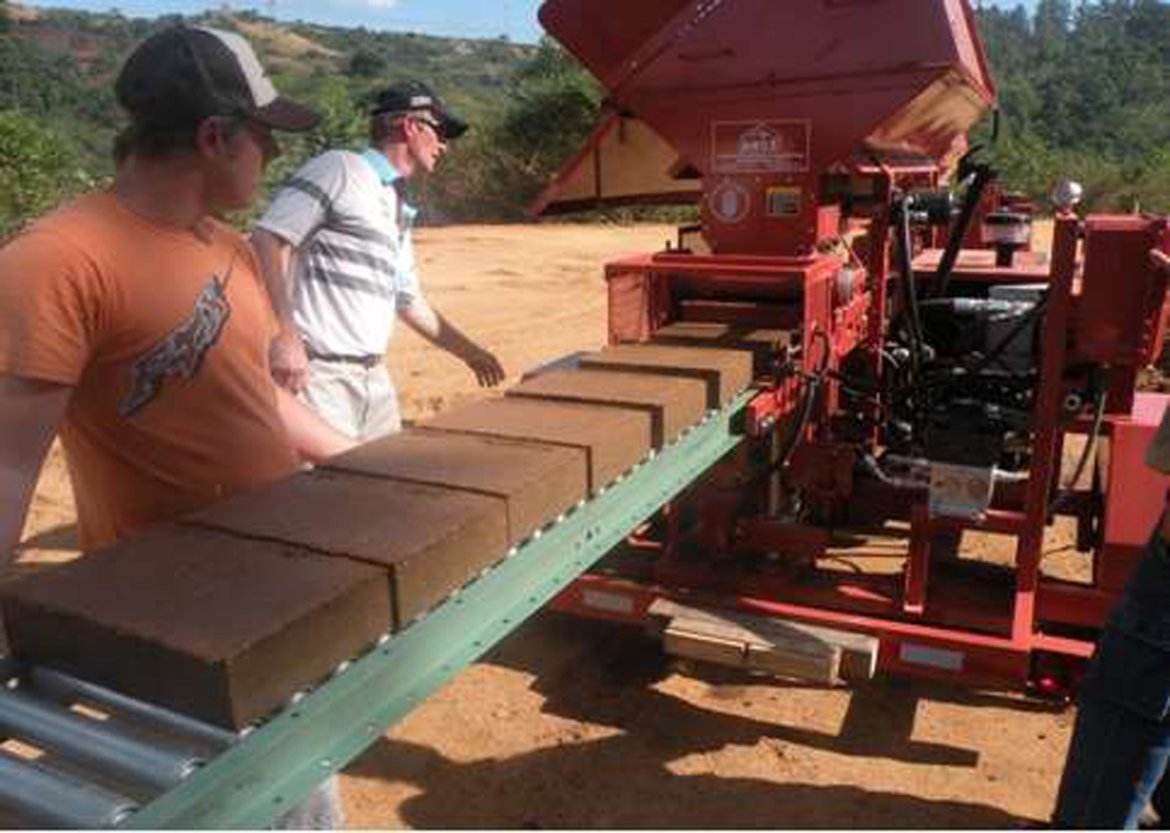USE-IT's Compressed Earth Blocks (CEBs) were the Structural Home winners as an innovation which could be used in the construction of homes including self-build and incremental upgrades.
Entered by Chris Whyte, USE-IT’s Compressed Earth Blocks Construction is an innovative process that uses a 30% blend of builder's rubble and clay-bearing soils to manufacture Compressed Earth Blocks (also known as CEBs). Building sustainable homes with the lowest carbon footprint, CEBs are 3-5 times stronger than concrete blocks, cheaper, ten times more thermally efficient and environmentally-friendly.
Durban-based USE-IT was established in 2009 as a Section 21 Company as the eThekwini Waste Materials Recovery Industry Development Cluster through the Economic Development Unit of the eThekwini Municipality. The aim of this initiative is to research, identify and implement key waste beneficiation opportunities that will divert waste from landfill, whilst creating sustainable and economically viable projects resulting in green job creation. USE-IT is an NGO creating the vital link between the public and private sector.
USE-IT's primary objective is to unlock the opportunities in the waste collection segment, and to then channel this resource into value-add initiatives that multiply the economic, social and environmental benefits to create sustainable cities. The objectives of this project meet these requirements and are in line with the constitutional obligations of the organization.
Chris Whyte explains: “Our blocks are made with locally available materials and our equipment is mobile to make use of the materials on site. There is no need to plaster our walls and we use the smallest possible amount of cement [5%] to stabilise the blocks. We do not need to fire the blocks and they cure in just seven days, ready to build. The process of building does not use a cement brickforce between the blocks, but rather a thin soil-slurry that is cheaper, quicker to use and bonds more strongly than cement. This allows us to train people within an hour to lay CEBs, eliminating the need for qualified wet-work artisans. There is no waiting for cement to dry between blocks because the slurry sets in under four minutes. In short, CEBs are greener, stronger and 16% cheaper than conventional equivalents.”
USE-IT has an existing track record in several aspects of project development and implementation in electronic waste, glass projects, plastics beneficiation, organic composting and fertiliser production, alternative green energy projects, rubber recycling projects, waste to- art projects, Compressed Earth Blocks Projects and community partnerships.
CEBs have now secured approval from the South African Bureau of Standards (SABS) as well as the National Homebuilder Registration Council (NHBRC) and Construction Industry Development Board (cidb), proving that the system is viable, certified and legal under the laws of South Africa. Given the challenges associated with getting alternative building materials through the bureaucratic process and low-cost housing tender system, this marks an important step forward.

